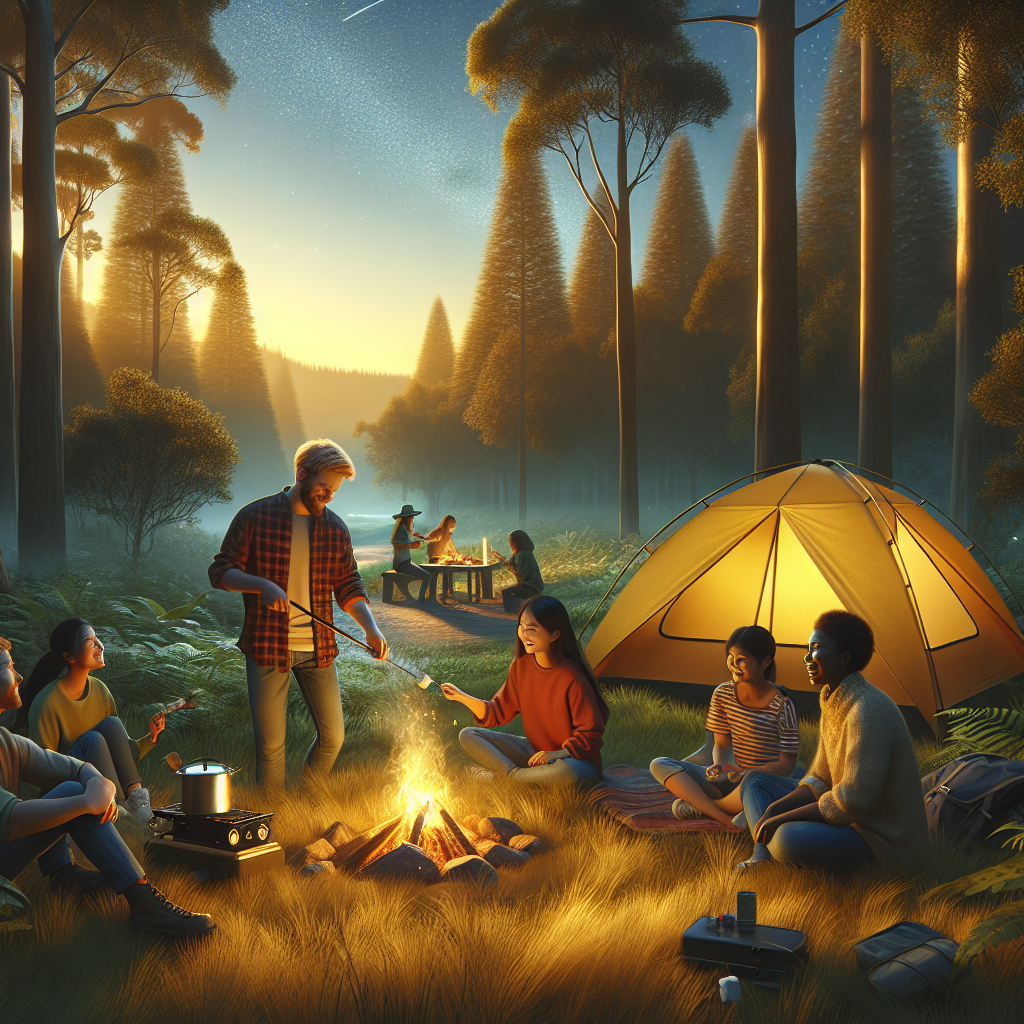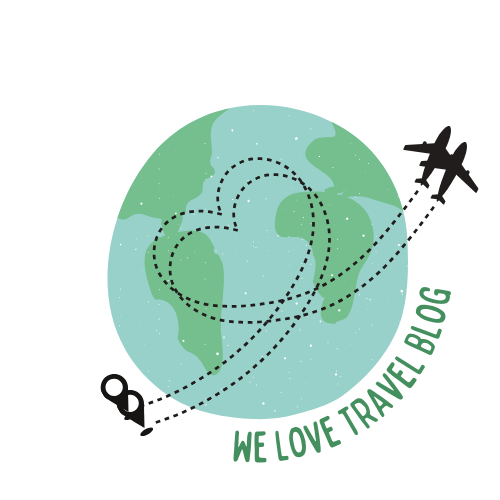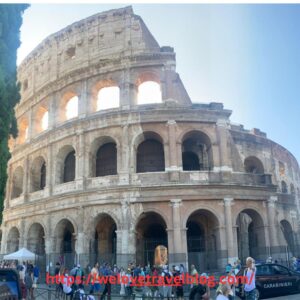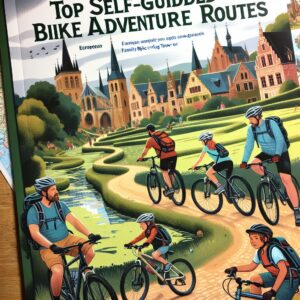
Key Takeaways
- Choosing the right campsite in Yellowstone can make or break your family adventure.
- Essential camping gear ensures comfort and safety for all family members.
- Yellowstone offers unique programs and activities to engage kids with nature.
- Proper planning is key to experiencing Yellowstone’s iconic geysers and wildlife.
- Environmental stewardship is a crucial part of camping, teaching kids to ‘Leave No Trace’.
Picking the Perfect Campsite for Your Family
When you set out for a family camping trip in Yellowstone, the first step is picking a campsite that fits like a glove. You want a place that’s not just a spot on the map, but a home away from home. It should be safe, comfortable, and ideally, somewhere your kids can claim as their kingdom for adventure. Let’s dive into the nuts and bolts of selecting the ideal campsite.
Considerations for Campsite Selection
Choosing the right campsite is a bit like choosing the right house – it’s all about location, location, location. But there’s more to it when you’re in the wild. Here’s what to look for:
- Accessibility: Make sure the campsite is reachable, especially if you have little ones in tow. Some sites are only accessible by hiking trails, which can be an adventure or a challenge, depending on your family’s experience.
- Amenities: Check if the site has the basics: potable water, toilets, and possibly a store for last-minute supplies. These small comforts can make a big difference.
- Space: Look for campsites with enough room for your tent and a safe area for kids to play. Remember, you’ll want space to spread out and enjoy, not just sleep.
Overview of Family-Friendly Campsites in Yellowstone
Yellowstone has a dozen campgrounds with varying features. Here’s a quick rundown of some family-friendly options:
- Madison Campground: Known for its central location, it’s great for families looking to explore different parts of the park.
- Bridge Bay Campground: Close to Yellowstone Lake, this spot offers scenic views and boating opportunities.
- Canyon Campground: A stone’s throw from the Grand Canyon of the Yellowstone, this site is perfect for families eager to hike and take in the vistas.
Remember, some campsites can be reserved ahead of time, while others are first-come, first-served. Planning is essential, so book as early as you can.
Essentials for Family Camping in Yellowstone
Now, let’s talk gear. The right equipment can be the difference between a night spent staring at the stars and one spent staring at the inside of a wet tent. Here’s what you need:
Packing Checklist for All Ages
Whether you’re a seasoned camper or a first-timer, a checklist is your best friend. Here’s a basic list to get you started:
- Tent with a rain fly and groundsheet
- Sleeping bags suitable for the season
- Camping pads or air mattresses
- Headlamps or flashlights (with extra batteries)
- First-aid kit
- Firestarter and matches (kept in a waterproof container)
- Food storage containers (bear-proof if possible)
- Map of the park and compass or GPS
Ensuring Safety and Comfort in the Wild
Safety is the cornerstone of any family camping trip. In Yellowstone, that means being bear aware. Store your food and scented items in bear-proof containers or designated bear boxes. Educate your kids on keeping a safe distance from wildlife and always supervise them.
Comfort is just as important. Check that everyone’s sleeping bag is rated for the nighttime temperatures, and bring extra layers for those chilly Yellowstone nights.
Planning Your Adventure Itinerary
Yellowstone is vast, with more to see and do than you could cover in many visits. To make the most of your time, an itinerary is crucial. Start with the park’s ‘big hits’ like Old Faithful and the Grand Prismatic Spring, then consider the interests of your family. Are you hikers, wildlife enthusiasts, or photographers? Tailor your plan to your family’s passions, and remember to include downtime to relax and just enjoy being in nature.
Cooking and Dining in the Great Outdoors
Meals in the great outdoors are about more than just sustenance; they’re about creating memories. Cooking over a campfire or a portable stove can be one of the highlights of your trip. Keep it simple with one-pot meals and pre-made snacks that don’t require a lot of clean-up. And always remember to cook away from your sleeping area to keep curious wildlife at bay.
Here’s a tip: Prepare ingredients beforehand at home. For example, mix the dry ingredients for pancakes and store them in a ziplock bag. Just add water at the campsite, and you’ve got an easy and delicious breakfast.
Easy Campfire Recipes for the Whole Family
There’s nothing like sharing stories around the campfire with a warm meal. Try these family-friendly recipes:
- Foil packet dinners: Combine sliced potatoes, carrots, onions, and your choice of protein in a foil packet with some seasoning. Cook over the campfire for a no-mess meal.
- Skillet s’mores dip: Layer chocolate chips and marshmallows in a cast-iron skillet and heat until melted and gooey. Dip with graham crackers for a twist on the classic s’more.
- Campfire chili: A hearty chili can be made in advance and reheated over the fire, perfect for a chilly evening.
Smart Food Storage and Wildlife Safety
Proper food storage isn’t just about keeping your sandwiches away from squirrels. It’s about protecting both your family and the park’s wildlife. Here’s how:
- Use bear-proof containers or park-provided food storage boxes.
- Never leave food or scented items unattended.
- Clean up immediately after meals and dispose of trash in bear-proof dumpsters.
Most importantly, remember that feeding wildlife is dangerous and illegal. It’s not just bears; even small animals can become a problem if they learn to associate humans with food.
Tent Set-Up and Campground Etiquette
Setting up your tent is like building your family’s temporary castle. Choose a flat spot away from overhanging branches, and if possible, set up while there’s still daylight. Lay out a groundsheet first to protect the bottom of your tent, then pitch the tent, secure it with stakes, and finish with the rain fly.
Step by Step Guide to Assembling Your Family Tent
Assembling a tent can be a fun family activity if everyone knows their role. Here’s a simple step-by-step process:
- Lay out the tent on the groundsheet, aligning it with the wind direction for better stability.
- Connect the poles according to the tent instructions, then thread them through the appropriate sleeves or clips on the tent body.
- Raise the tent by securing the ends of the poles in the tent’s corners.
- Attach the rain fly, ensuring it’s taut to prevent water from pooling.
- Finally, secure the tent with stakes and guy lines for extra stability.
Respecting Nature and Fellow Campers
Good campground etiquette ensures everyone has a great experience. Keep noise levels down, especially in the evenings, and leave facilities cleaner than you found them. If you’re bringing a pet, keep them on a leash and always clean up after them.
Emergency Preparedness and First Aid
Being prepared for emergencies is a non-negotiable part of camping. Have a first aid kit tailored to your family’s needs, and know how to use everything in it. Discuss emergency plans with your family, so everyone knows what to do if they get lost or encounter wildlife.
What to Do in Case of Wildlife Encounters
Wildlife encounters can be thrilling but respect the animals’ space. If you see a bear or other large animal, maintain a safe distance and never approach or feed them. In the rare event of a bear encounter, speak calmly and back away slowly; do not run.
First Aid Basics for Parents and Kids
Equip your kids with basic first aid knowledge. Teach them to identify symptoms of dehydration, how to clean and dress a wound, and when to ask for help. Role-playing different scenarios can be a fun way to learn.
Weather Considerations and Clothing Guide
The weather in Yellowstone can be unpredictable, so come prepared for anything. Layering is key. Start with a moisture-wicking base layer, add an insulating layer, and top it off with a waterproof and windproof shell.
Dressing for the Yellowstone Climate
Even in summer, temperatures can dip at night. Pack warm hats and gloves, and consider thermal underwear for sleeping. During the day, a hat and sunscreen are essential to protect against the sun at high altitudes.
Tips for Staying Dry and Warm
Wet weather can happen, so pack rain gear for everyone. If you get caught in the rain, change into dry clothes as soon as possible to avoid hypothermia. At night, fill a water bottle with hot water and tuck it into your sleeping bag for extra warmth.
When the skies decide to open up, being prepared can turn a potential washout into a fun adventure. Always have waterproof jackets and pants ready, and teach your kids the importance of staying dry to keep warm. It’s a good idea to have a stash of dry clothes in waterproof bags, just in case.
Tips for Staying Dry and Warm
Here’s how to ensure that everyone stays dry and warm, no matter what Mother Nature throws your way:
- Invest in quality rain gear for each family member.
- Always pack extra socks and layers.
- Use waterproof bags to keep essentials dry.
- Set up a tarp over your eating or gathering area for shelter.
Leaving No Trace – Environmental Stewardship
Leaving no trace is about preserving the natural beauty of Yellowstone for future generations. It’s a set of ethics that guides us to minimize our impact on the environment. When you camp with your family, you’re not just having fun; you’re also teaching your kids to care for our planet.
Principles of ‘Leave No Trace’ for Families
Embrace these seven principles to leave no trace:
- Plan ahead and prepare.
- Travel and camp on durable surfaces.
- Dispose of waste properly.
- Leave what you find.
- Minimize campfire impacts.
- Respect wildlife.
- Be considerate of other visitors.
Conservation Activities You Can Participate In
Participating in conservation activities can be both educational and rewarding. Yellowstone offers volunteer programs where families can help with trail maintenance or citizen science projects. It’s a hands-on way to contribute to the park’s preservation.
Frequently Asked Questions (FAQ)
What’s the Best Time of Year for Family Camping in Yellowstone?
The best time for family camping in Yellowstone is from late May through September when the weather is warmer and the park’s services are fully operational. However, if you enjoy winter activities and don’t mind the cold, winter camping can be a magical experience.
Can We Bring Our Family Pet Camping in Yellowstone?
Yes, pets are allowed in Yellowstone, but there are strict rules. They must be leashed at all times and are not allowed on trails or in the backcountry. Always clean up after your pet and ensure they do not disturb the wildlife or other visitors.
Are There Any Age Restrictions for Camping in Yellowstone?
There are no specific age restrictions for camping in Yellowstone. However, certain activities and programs may have age limits. Always check the requirements for the activities you’re planning to ensure they’re suitable for your children.
How Can We Reserve a Campsite, and How Far in Advance?
To reserve a campsite in Yellowstone, you can book through the National Park Service’s reservation system. It’s wise to book as early as possible, especially for peak summer months. Some campgrounds accept reservations up to a year in advance.
What Should We Do if We Encounter Wildlife While Camping?
If you encounter wildlife while camping, keep a safe distance, and never approach or feed the animals. If you see a bear, speak calmly and back away slowly. Make sure your food is stored properly to avoid attracting wildlife to your campsite.



